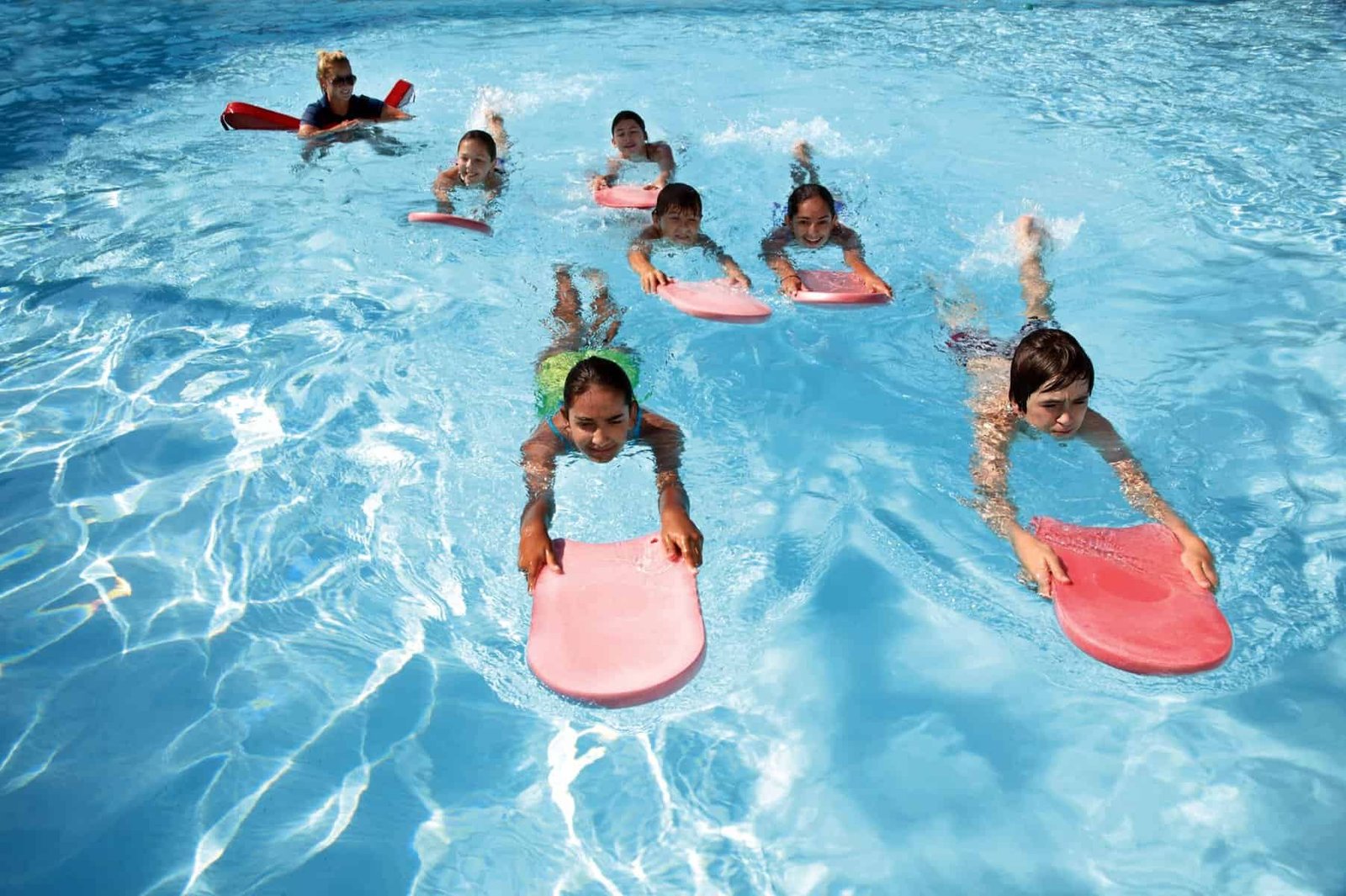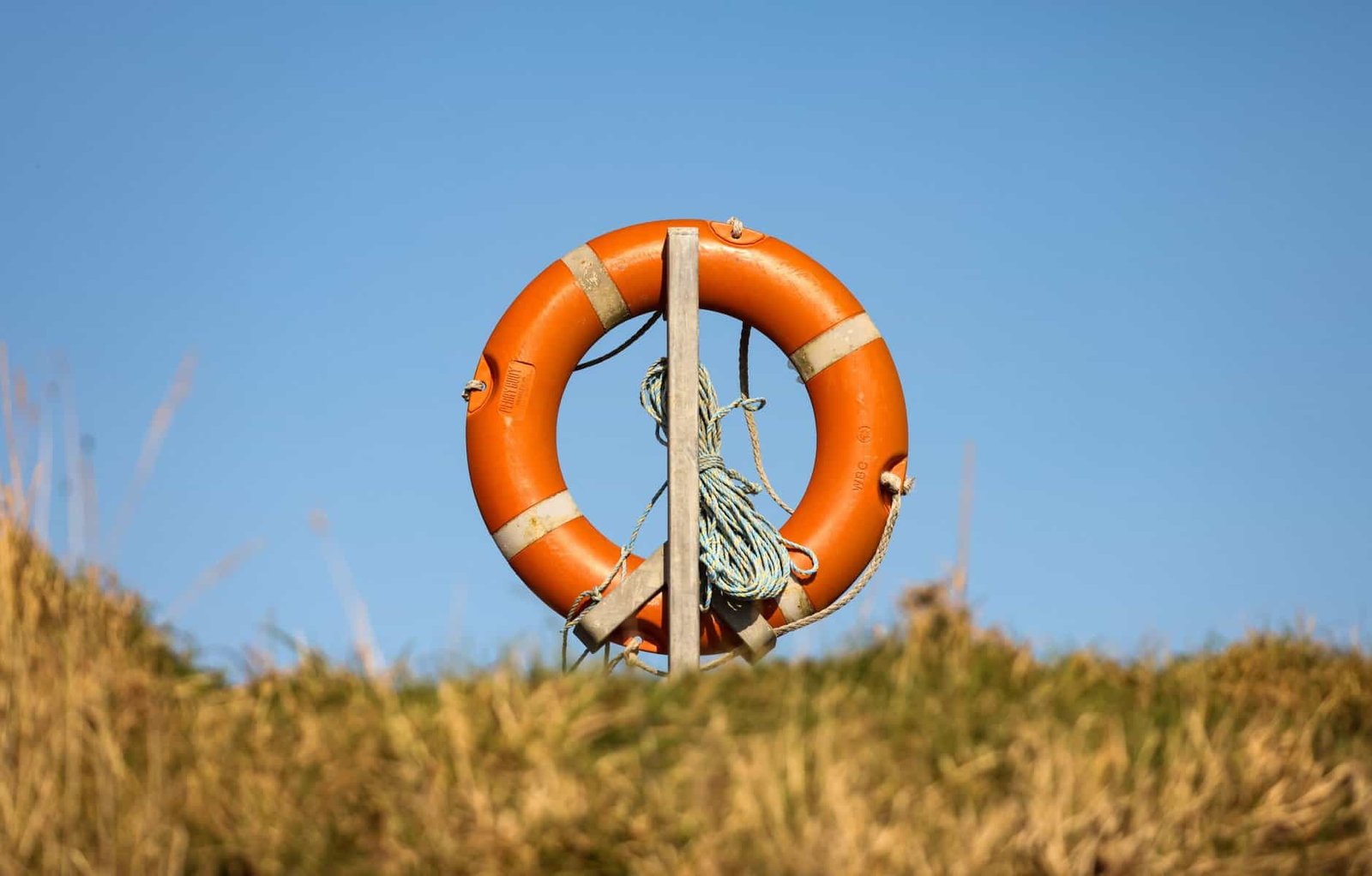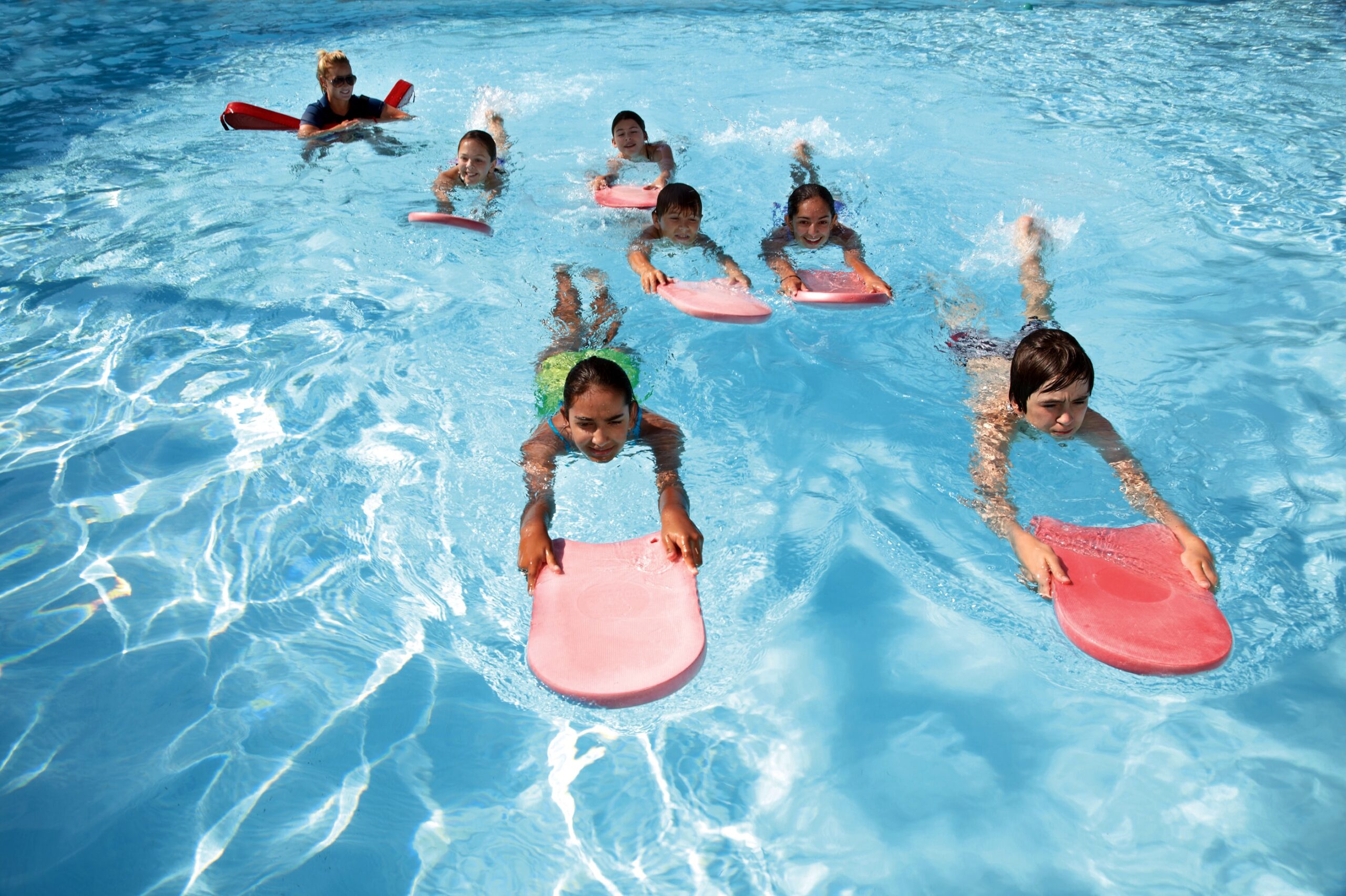Living in a home with a residential well provides numerous benefits, including access to fresh and natural drinking water. However, ensuring the safety of the water coming from your well is crucial for the well-being of you and your loved ones. In this article, we will explore some simple yet effective steps that you can take to ensure the safety of your drinking water and maintain your peace of mind. By implementing these measures, you can be confident that the water flowing from your residential well is clean and safe for consumption.

Testing the Water Quality
Frequency of Testing
To ensure the safety of your drinking water from a residential well, it is important to regularly test the water quality. The frequency of testing will depend on various factors such as the location of your well, the age of the well system, and any potential sources of contamination in the surrounding area. In general, it is recommended to test your well water at least once a year for common contaminants such as bacteria, nitrates, and any other local water quality concerns. However, if you notice any changes in the taste, color, or odor of your water, it is advisable to conduct additional tests to identify the potential source of the issue.
Testing Methods
There are various testing methods available to assess the quality of your well water. One common method is water sampling, where a sample of your water is collected and sent to a certified laboratory for analysis. This lab analysis will provide you with detailed information about the presence of contaminants such as bacteria, viruses, heavy metals, and chemicals in your drinking water. Another testing method is the use of testing kits, which allow you to conduct basic water quality tests at home. These kits typically include test strips or reagents that can indicate the presence or absence of certain contaminants. While home testing kits can provide a preliminary assessment of your water quality, it is recommended to get your water tested by a professional laboratory for accurate and reliable results.
Testing Parameters
When testing the water quality from your well, there are several important parameters to consider. These parameters can provide valuable insights into the overall safety of your drinking water. Some common parameters to test for include:
- Bacteria and Coliforms: These tests identify the presence of harmful bacteria in your water, such as E. coli, which can cause gastrointestinal illnesses.
- Nitrate Levels: Elevated levels of nitrates in your water can indicate potential contamination from agricultural fertilizers or septic systems, posing a risk to human health, especially for infants and pregnant women.
- pH and Alkalinity: The pH level of your water can affect its taste and ability to corrode plumbing fixtures. Additionally, high alkalinity levels can lead to scale formation, affecting the efficiency of water heaters and other appliances.
- Heavy Metals: Tests for heavy metals such as lead, arsenic, and mercury are crucial, as their presence in high concentrations can have serious health implications.
- Total Dissolved Solids (TDS): TDS levels indicate the overall mineral content in your water. High TDS can affect the taste of your water and indicate the presence of certain contaminants.
- Pesticides and Herbicides: These tests assess the presence of harmful chemicals that may be leaching into your groundwater from agricultural or industrial activities.
- Chlorine Residual: Chlorine is often used as a disinfectant in water treatment processes. Testing for chlorine residual can help ensure that your water is properly treated and safe for consumption.
By regularly testing these parameters, you can ensure that your drinking water is free from harmful contaminants and maintain its quality.
Maintaining the Well System
Regular Inspection
Regular inspections of your well system are essential to identify any potential issues and ensure its proper functioning. It is recommended to have a professional well inspector visit your property at least once every few years, or more frequently if you notice any signs of problems such as reduced water flow, unusual noises, or changes in water quality. During an inspection, the well inspector will assess the condition of the well components, such as the casing, pump, electrical connections, and pressure tanks. They will also check for any signs of leakage or contamination and evaluate the overall performance of the system. Regular inspections can help you catch any problems early on and prevent costly repairs or health risks associated with a malfunctioning well system.
Well Maintenance
Proper maintenance of your well system is crucial to ensure its longevity and optimal performance. Some key maintenance tasks include:
- Keep the area around the well clean and free from debris. This will prevent any potential sources of contamination from entering the well.
- Insulate well components to protect them from extreme temperatures and minimize the risk of freezing during colder months.
- Regularly check and clean the well screen or filter to prevent clogging and ensure efficient water flow.
- Test and maintain the pressure tank to ensure proper water pressure and prevent damage to the well pump.
- Inspect and maintain the well cap or seal to prevent the entry of insects, rodents, or surface contaminants.
- Follow manufacturer’s guidelines for maintenance of any additional components such as water treatment systems, filtration units, or disinfection devices installed in your well system.
By following these maintenance practices, you can prolong the lifespan of your well system and reduce the risk of contamination or malfunctions.
Disinfection
Disinfection of the well system is an important step to ensure the safety of your drinking water. Disinfection should be carried out when the well is initially constructed, after any major repairs, or if water quality test results indicate the presence of bacteria or other harmful contaminants. Disinfection can be done using chlorine-based solutions or other disinfectants approved for well disinfection. It is important to follow the recommended procedures and dosage for disinfection, as specified by local health authorities or well professionals. After disinfection, it is crucial to flush the system thoroughly and conduct follow-up tests to ensure that the water is safe for consumption.

Protecting the Well from Contaminants
Well Location
Choosing the right location for your well is critical in protecting it from potential sources of contamination. When siting a well, it is important to consider the following factors:
- Keep the well at a safe distance from potential sources of contamination such as septic systems, livestock areas, chemical storage facilities, or underground storage tanks.
- Ensure that the well is located uphill or at a higher elevation from potential contaminant sources to avoid the risk of surface water runoff into the well.
- Consider local geology and hydrogeology to identify potential pathways for contamination, such as areas with high-permeability soils or fractures in subsurface rock formations.
- Comply with local regulations and setback requirements for well construction to minimize the risk of contamination.
By carefully selecting the location for your well, you can reduce the potential for contamination and protect your drinking water.
Surface Water Runoff
Surface water runoff can pose a significant risk to the quality of your well water. It is important to take measures to prevent surface water runoff from entering your well. Some key practices to consider include:
- Diverting rainwater away from the well by ensuring proper grading and drainage around the wellhead.
- Creating a vegetative buffer zone around the well to act as a natural filter and reduce the transport of contaminants from surrounding areas.
- Avoiding the use of pesticides, herbicides, or fertilizers near the well, as these chemicals can easily be washed into the groundwater through runoff.
- Regularly inspecting and maintaining any ditches, culverts, or other drainage features on your property to prevent surface water from pooling near the well.
By managing surface water runoff effectively, you can minimize the risk of contamination and maintain the integrity of your well water.
Chemical Storage
If you store chemicals on your property, it is important to take precautions to prevent any accidental spills or leaks that could potentially contaminate your well water. Some key practices to consider:
- Store chemicals in designated, secure areas with spill containment measures to prevent any accidental leaks or spills.
- Use properly labeled containers and ensure that all chemicals are stored in accordance with safety guidelines and local regulations.
- Regularly inspect storage areas to identify any signs of leakage or deterioration in the containers.
- Avoid storing chemicals in close proximity to the well or any potential pathways for contamination.
By practicing safe chemical storage, you can minimize the risk of accidental contamination and protect your well water from harm.
Addressing Potential Contamination Sources
Septic Systems
Proper management and maintenance of septic systems are essential to prevent the contamination of your well water. If you have a septic system on your property, consider the following measures:
- Ensure that your septic system is properly designed, installed, and regularly maintained by a licensed professional.
- Schedule regular inspections and pumping of the septic tank to prevent overflows or backups that could contaminate the groundwater.
- Avoid disposing of harmful substances such as chemicals, paint, pharmaceuticals, or excessive amounts of household cleaners into the septic system.
- Maintain a safe distance between the septic system and the well, as specified by local regulations, to prevent the risk of cross-contamination.
By properly managing your septic system, you can minimize the risk of harmful bacteria or chemicals reaching your well water.
Agricultural Practices
If you live in an area with agricultural activities nearby, it is important to be aware of potential sources of contamination and take necessary precautions. Consider the following practices:
- Maintain a safe distance between your well and any crop fields, livestock areas, or agricultural runoff pathways.
- Consult with local agricultural extension offices or experts to understand best practices for managing land and water resources in agricultural areas.
- Ensure that farmers and agricultural workers follow proper practices for the application of pesticides, herbicides, and fertilizers to minimize the risk of contamination.
By addressing potential contamination sources related to agricultural practices, you can protect your well water from harmful substances.
Industrial Activities
If there are any industrial activities or facilities near your property, it is important to be aware of potential risks and take necessary precautions to protect your well water. Consider the following measures:
- Stay informed about local industrial activities and potential sources of contaminants that may pose a risk to your well water.
- Consult with local environmental agencies or professionals to identify any specific risks or guidelines related to industrial activities in your area.
- Participate in community forums or organizations that focus on environmental stewardship and advocate for the protection of water resources.
By staying vigilant and proactive, you can minimize the risk of industrial contaminants reaching your well water.

Implementing Water Treatment Methods
Water Filtration
Water filtration is an effective method to remove various contaminants and improve the overall quality of your well water. There are different types of water filtration systems available, including activated carbon filters, sediment filters, and reverse osmosis systems. The choice of filtration system will depend on your specific water quality concerns and the contaminants present. Activated carbon filters can effectively remove chlorine, volatile organic compounds (VOCs), and some heavy metals. Sediment filters are designed to remove larger particles such as sand, silt, or rust. Reverse osmosis systems are highly effective in removing a wide range of contaminants, including bacteria, viruses, nitrates, heavy metals, and many chemicals. Consulting with a water treatment specialist can help you determine the most suitable filtration system for your needs.
Water Disinfection
Water disinfection is crucial to eliminate harmful bacteria, viruses, and other disease-causing microorganisms in your well water. Chlorination is one common method of disinfection, where chlorine is added to the water to kill any pathogens present. Ultraviolet (UV) disinfection is another effective method, where UV light is used to destroy microorganisms without the need for chemicals. Chlorination is relatively cost-effective and widely used, but it may leave a residual taste or odor in the water. UV disinfection, on the other hand, is chemical-free and does not affect the taste or odor of the water. Consulting with a water treatment specialist can help you determine the most appropriate disinfection method based on your water quality and preferences.
Reverse Osmosis
Reverse osmosis (RO) is a highly effective water treatment method that uses a semi-permeable membrane to remove a wide range of contaminants from your well water. RO systems work by passing the water through this membrane, which blocks the passage of impurities while allowing pure water to pass through. RO systems are capable of removing contaminants such as bacteria, viruses, nitrates, arsenic, lead, fluoride, and many other chemicals. However, it is important to note that RO systems may also remove beneficial minerals from the water, so it is advisable to consider remineralization options or consult with a water treatment specialist to ensure a well-balanced water composition.
By implementing water treatment methods that are suited to your specific needs, you can significantly improve the quality and safety of your well water.
Understanding Waterborne Diseases
Common Waterborne Diseases
Waterborne diseases are illnesses caused by the consumption of contaminated water. Some common waterborne diseases include:
- Gastrointestinal Infections: Bacterial infections such as Campylobacter, Salmonella, and E. coli can cause symptoms such as diarrhea, abdominal pain, and vomiting.
- Hepatitis A: This viral infection affects the liver and can be transmitted through contaminated water, leading to symptoms such as fatigue, jaundice, and abdominal pain.
- Cryptosporidiosis: This parasitic infection is caused by the microscopic parasite Cryptosporidium, which can cause severe diarrhea and dehydration.
- Giardiasis: Another parasitic infection caused by the protozoan parasite Giardia, leading to symptoms such as diarrhea, stomach cramps, and weight loss.
Signs and Symptoms
The signs and symptoms of waterborne diseases can vary depending on the specific pathogen and individual factors. Common symptoms include diarrhea, nausea, vomiting, abdominal pain, fever, fatigue, and dehydration. If you or your family members experience any of these symptoms after consuming well water, it is important to seek medical attention and inform your healthcare provider about the possibility of waterborne disease. Timely diagnosis and treatment can help prevent complications and ensure a speedy recovery.
Preventive Measures
To prevent waterborne diseases, it is important to take preventive measures and practice good hygiene. Some key measures include:
- Ensure that your well water is regularly tested for bacteria, viruses, and other contaminants, and follow any treatment recommendations provided by health authorities or water treatment specialists.
- Practice proper personal hygiene, including regular handwashing with soap and clean water, especially before meals and after using the bathroom.
- Store water in clean, covered containers to prevent contamination from insects, animals, or other sources.
- Avoid consuming water from unknown or untrusted sources, especially when traveling or in areas with uncertain water quality.
- Keep your well system properly maintained and address any potential sources of contamination in your surroundings.
By taking these preventive measures, you can significantly reduce the risk of waterborne diseases and keep your family healthy.
Emergency Response Planning
Evacuation Plan
In emergency situations such as natural disasters or contamination events, having an evacuation plan is crucial to ensure the safety of yourself and your family. Consider the following steps when developing your evacuation plan:
- Identify safe locations or emergency shelters in your community where you can evacuate to if necessary.
- Plan multiple evacuation routes in case some roads or bridges are impassable.
- Ensure that all family members are aware of the evacuation plan and know where to meet in case of separation.
- Prepare an emergency kit with essentials such as food, water, medications, flashlights, and important documents.
- Stay informed about local emergency alerts and follow the instructions provided by authorities.
By having a well-thought-out evacuation plan, you can minimize the risks and ensure your family’s safety during emergencies.
Emergency Water Sources
In emergency situations where your well water may be compromised, it is important to have alternative sources of water available. Some common emergency water sources include:
- Bottled Water: Store an adequate supply of commercially bottled water that is sealed and has a long shelf life.
- Water Storage Containers: Purchase food-grade water storage containers and fill them with water from a safe source. Ensure that containers are cleaned and properly sealed to prevent contamination.
- Community Water Sources: Stay informed about community water sources such as emergency water trucks or distribution centers that may be available during emergencies.
It is important to regularly rotate and replace stored water to ensure its freshness and usability during emergencies.
Water Storage
Proper water storage is essential to ensure a safe and adequate water supply during emergencies. Consider the following guidelines for water storage:
- Store water in clean, food-grade containers that are designed for water storage. Avoid using containers that previously held chemicals or non-food substances.
- Sanitize containers before filling them with water by using a solution of one teaspoon of household bleach per gallon of water. Rinse the containers thoroughly after sanitizing.
- Fill containers with water from a safe source, such as a municipal water supply or a commercially packaged drinking water.
- Seal the containers tightly and store them in a cool, dark place away from direct sunlight and chemicals.
By following these water storage guidelines, you can ensure that you have a safe and reliable water supply during emergencies.
Educating Yourself and Your Family
Water Safety Awareness
Educating yourself and your family about water safety is crucial to ensure that everyone understands the importance of protecting and preserving well water quality. Some key aspects of water safety awareness include:
- Understanding the potential sources of contamination and taking necessary precautions to prevent them.
- Teaching family members about the signs and symptoms of waterborne diseases and the importance of reporting any health concerns to a healthcare professional.
- Encouraging regular handwashing and good hygiene practices, especially before handling food or consuming water.
- Promoting responsible use of water resources, such as minimizing water wastage, fixing leaks promptly, and using water-efficient appliances.
By fostering a culture of water safety awareness, you can actively contribute to the well-being of your family and the community.
Water Usage Practices
Practicing efficient water usage not only helps conserve water resources but also minimizes the potential for contamination or pollution. Consider the following water usage practices:
- Fix any leaks or drips in your plumbing system promptly to prevent water wastage and potential damage to your well.
- Use water-efficient appliances and fixtures, such as low-flow toilets, showerheads, and faucets.
- Avoid overusing household chemicals or excessive amounts of cleaning products that might end up in the wastewater and potentially contaminate the groundwater.
- Practice responsible irrigation methods, such as using drip irrigation or watering during cooler parts of the day to minimize water loss through evaporation.
By adopting water usage practices that prioritize efficiency and environmental stewardship, you can contribute to the long-term sustainability of your well water supply.
Emergency Preparedness
Being prepared for emergencies is essential to ensure the safety and well-being of your family. Consider the following measures:
- Create an emergency preparedness kit that includes essential items such as food, water, medications, flashlights, batteries, and first aid supplies.
- Develop a family emergency plan that includes communication strategies, evacuation routes, and meeting points.
- Stay informed about local emergency resources, alerts, and community support networks.
- Conduct regular drills and practice emergency procedures with your family to ensure readiness.
By actively preparing for emergencies, you can minimize the impact of unexpected events and safeguard the well-being of your loved ones.
Involving Professionals
Well Inspection Services
Engaging the services of professional well inspectors is highly recommended to ensure the proper functioning and safety of your well system. Well inspection services can provide expert knowledge and assessments of your well, identifying any potential issues and offering advice on maintenance or repairs. They can conduct comprehensive inspections, including assessing the condition of the well components, checking water flow rates, and testing water quality. Professional well inspectors can also provide guidance on any necessary upgrades or modifications to meet regulatory standards and best practices.
Water Testing Services
Water testing services offered by certified laboratories or experienced professionals are invaluable in assessing the quality of your well water. These services involve collecting water samples from your well and analyzing them for various contaminants. Water testing can cover parameters such as bacteria, nitrates, pH, heavy metals, pesticides, and many others, depending on your specific needs. By utilizing water testing services, you can obtain accurate and reliable results that will help you make informed decisions about maintaining or improving your well water quality.
Water Treatment Specialists
Water treatment specialists are experts in designing and implementing water treatment systems tailored to your specific needs. They can assess your water quality test results and recommend appropriate treatment methods that address your concerns. These specialists have in-depth knowledge of different water treatment technologies, including filtration systems, disinfection methods, and advanced treatment processes. By consulting with water treatment specialists, you can ensure that the water treatment methods you choose are effective, efficient, and capable of meeting health and safety standards.
By involving professionals in the maintenance, testing, and treatment of your well water, you can tap into their expertise and ensure the optimal and sustainable functioning of your well system.
Government Regulations and Guidelines
Health and Safety Standards
Government bodies and health authorities establish health and safety standards to protect the quality of drinking water from residential wells. These standards may include maximum permissible levels for various contaminants, guidelines for well construction and maintenance, and regulations for water treatment and disinfection. It is essential to familiarize yourself with the specific standards set by your local health department or environmental agency and ensure compliance to safeguard your well water quality and the health of your household.
Permitting and Compliance
In many jurisdictions, permits and compliance with regulatory requirements are necessary for the construction, repair, or modification of wells. It is important to consult with your local health department or regulatory agency to understand the permitting process and any specific requirements for your area. By obtaining the necessary permits and ensuring compliance, you can ensure that your well system meets the required standards and operates legally and safely.
Reporting and Incident Response
Government agencies typically have reporting mechanisms and protocols in place to respond to incidents, complaints, or issues related to well water quality. If you encounter any problems with your well water or suspect contamination, it is crucial to report it to the appropriate authorities. By reporting incidents, you not only help safeguard your own well water but also contribute to the collective efforts in monitoring and protecting water resources within the community.
By understanding and adhering to government regulations and guidelines, you can demonstrate your commitment to water safety and contribute to the overall well-being of your community.
In conclusion, ensuring the safety of your drinking water from a residential well requires a comprehensive approach that involves regular testing, proper well system maintenance, protection from contaminants, treatment methods, awareness of waterborne diseases, emergency preparedness, education, involving professionals, and compliance with government regulations. By implementing the practices and guidelines discussed in this article, you can take proactive steps to safeguard your well water and the health of your family. Remember, maintaining a safe and reliable water supply is a shared responsibility that requires ongoing effort and vigilance.

